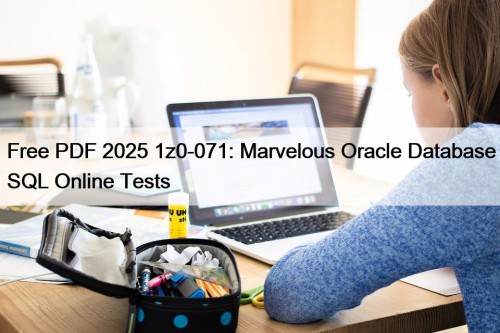Most Popular
 Free PDF 2025 1z0-071: Marvelous Oracle Database SQL Online Tests
Free PDF 2025 1z0-071: Marvelous Oracle Database SQL Online Tests
2025 Latest Exams-boost 1z0-071 PDF Dumps and 1z0-071 Exam Engine ...
 Free PSE-Strata-Pro-24 Study Material & PSE-Strata-Pro-24 Test Questions Pdf
Free PSE-Strata-Pro-24 Study Material & PSE-Strata-Pro-24 Test Questions Pdf
Palo Alto Networks Systems Engineer Professional - Hardware Firewall exam ...
 Helpful Features of ACFE CFE Dumps PDF Format
Helpful Features of ACFE CFE Dumps PDF Format
P.S. Free 2025 ACFE CFE dumps are available on Google ...



Free PSE-Strata-Pro-24 Study Material & PSE-Strata-Pro-24 Test Questions Pdf

Palo Alto Networks Systems Engineer Professional - Hardware Firewall exam tests hired dedicated staffs to update the contents of the data on a daily basis. Our industry experts will always help you keep an eye on changes in the exam syllabus, and constantly supplement the contents of PSE-Strata-Pro-24 test guide. Therefore, with our study materials, you no longer need to worry about whether the content of the exam has changed. You can calm down and concentrate on learning. At the same time, the researchers hired by PSE-Strata-Pro-24 Test Guide is all those who passed the Palo Alto Networks Systems Engineer Professional - Hardware Firewall exam, and they all have been engaged in teaching or research in this industry for more than a decade. They have a keen sense of smell on the trend of changes in the exam questions. Therefore, with the help of these experts, the contents of PSE-Strata-Pro-24 exam questions must be the most advanced and close to the real exam.
Palo Alto Networks PSE-Strata-Pro-24 Exam Syllabus Topics:
| Topic | Details |
|---|---|
| Topic 1 |
|
| Topic 2 |
|
| Topic 3 |
|
| Topic 4 |
|
>> Free PSE-Strata-Pro-24 Study Material <<
PSE-Strata-Pro-24 Test Questions Pdf, PSE-Strata-Pro-24 Brain Dumps
Our product is dedicated to providing a better understanding of the the PSE-Strata-Pro-24 exa, through providing the stimulated environment of the PSE-Strata-Pro-24 exam, it will benefit you while taking part in the exam. For your benefit, we also have money back gurantee if you fail to pass the exam. Once you have passed the PSE-Strata-Pro-24exam, it is directly linked to yur salary and the position of you in your copany. The certificate is also a stimulation of you, it proves that the ability of you is impoved,and it will offers you more opportunities in the future job market.
Palo Alto Networks Systems Engineer Professional - Hardware Firewall Sample Questions (Q23-Q28):
NEW QUESTION # 23
A systems engineer should create a profile that blocks which category to protect a customer from ransomware URLs by using Advanced URL Filtering?
- A. High Risk
- B. Ransomware
- C. Command and Control
- D. Scanning Activity
Answer: B
Explanation:
When configuring Advanced URL Filtering on a Palo Alto Networks firewall, the "Ransomware" category should be explicitly blocked to protect customers from URLs associated with ransomware activities.
Ransomware URLs typically host malicious code or scripts designed to encrypt user data and demand a ransom. By blocking the "Ransomware" category, systems engineers can proactively prevent users from accessing such URLs.
* Why "Ransomware" (Correct Answer A)?The "Ransomware" category is specifically curated by Palo Alto Networks to include URLs known to deliver ransomware or support ransomware operations.
Blocking this category ensures that any URL categorized as part of this list will be inaccessible to end- users, significantly reducing the risk of ransomware attacks.
* Why not "High Risk" (Option B)?While the "High Risk" category includes potentially malicious sites, it is broader and less targeted. It may not always block ransomware-specific URLs. "High Risk" includes a range of websites that are flagged based on factors like bad reputation or hosting malicious content in general. It is less focused than the "Ransomware" category.
* Why not "Scanning Activity" (Option C)?The "Scanning Activity" category focuses on URLs used in vulnerability scans, automated probing, or reconnaissance by attackers. Although such activity could be a precursor to ransomware attacks, it does not directly block ransomware URLs.
* Why not "Command and Control" (Option D)?The "Command and Control" category is designed to block URLs used by malware or compromised systems to communicate with their operators. While some ransomware may utilize command-and-control (C2) servers, blocking C2 URLs alone does not directly target ransomware URLs themselves.
By using the Advanced URL Filtering profile and blocking the "Ransomware" category, the firewall applies targeted controls to mitigate ransomware-specific threats.
NEW QUESTION # 24
What is used to stop a DNS-based threat?
- A. DNS proxy
- B. Buffer overflow protection
- C. DNS tunneling
- D. DNS sinkholing
Answer: D
Explanation:
DNS-based threats, such as DNS tunneling, phishing, or malware command-and-control (C2) activities, are commonly used by attackers to exfiltrate data or establish malicious communications. Palo Alto Networks firewalls provide several mechanisms to address these threats, and the correct method isDNS sinkholing.
* Why "DNS sinkholing" (Correct Answer D)?DNS sinkholing redirects DNS queries for malicious domains to an internal or non-routable IP address, effectively preventing communication with malicious domains. When a user or endpoint tries to connect to a malicious domain, the sinkhole DNS entry ensures the traffic is blocked or routed to a controlled destination.
* DNS sinkholing is especially effective for blocking malware trying to contact its C2 server or preventing data exfiltration.
* Why not "DNS proxy" (Option A)?A DNS proxy is used to forward DNS queries from endpoints to an upstream DNS server. While it can be part of a network's DNS setup, it does not actively stop DNS- based threats.
* Why not "Buffer overflow protection" (Option B)?Buffer overflow protection is a method used to prevent memory-related attacks, such as exploiting software vulnerabilities. It is unrelated to DNS- based threat prevention.
* Why not "DNS tunneling" (Option C)?DNS tunneling is itself a type of DNS-based threat where attackers encode malicious traffic within DNS queries and responses. This option refers to the threat itself, not the method to stop it.
NEW QUESTION # 25
Which two tools should a systems engineer use to showcase the benefit of an evaluation that a customer has just concluded?
- A. Best Practice Assessment (BPA)
- B. Security Lifecycle Review (SLR)
- C. Golden Images
- D. Firewall Sizing Guide
Answer: A,B
Explanation:
After a customer has concluded an evaluation of Palo Alto Networks solutions, it is critical to provide a detailed analysis of the results and benefits gained during the evaluation. The following two tools are most appropriate:
* Why "Best Practice Assessment (BPA)" (Correct Answer A)?The BPA evaluates the customer's firewall configuration against Palo Alto Networks' recommended best practices. It highlights areas where the configuration could be improved to strengthen security posture. This is an excellent tool to showcase how adopting Palo Alto Networks' best practices aligns with industry standards and improves security performance.
* Why "Security Lifecycle Review (SLR)" (Correct Answer B)?The SLR provides insights into the customer's security environment based on data collected during the evaluation. It identifies vulnerabilities, risks, and malicious activities observed in the network and demonstrates how Palo Alto Networks' solutions can address these issues. SLR reports use clear visuals and metrics, making it easier to showcase the benefits of the evaluation.
* Why not "Firewall Sizing Guide" (Option C)?The Firewall Sizing Guide is a pre-sales tool used to recommend the appropriate firewall model based on the customer's network size, performance requirements, and other criteria. It is not relevant for showcasing the benefits of an evaluation.
* Why not "Golden Images" (Option D)?Golden Images refer to pre-configured templates for deploying firewalls in specific use cases. While useful for operational efficiency, they are not tools for demonstrating the outcomes or benefits of a customer evaluation.
NEW QUESTION # 26
A prospective customer is concerned about stopping data exfiltration, data infiltration, and command-and- control (C2) activities over port 53.
Which subscription(s) should the systems engineer recommend?
- A. Threat Prevention
- B. App-ID and Data Loss Prevention
- C. DNS Security
- D. Advanced Threat Prevention and Advanced URL Filtering
Answer: C
Explanation:
* DNS Security (Answer C):
* DNS Securityis the appropriate subscription for addressingthreats over port 53.
* DNS tunneling is a common method used fordata exfiltration, infiltration, and C2 activities, as it allows malicious traffic to be hidden within legitimate DNS queries.
* The DNS Security service appliesmachine learning modelsto analyze DNSqueries in real-time, block malicious domains, and prevent tunneling activities.
* It integrates seamlessly with the NGFW, ensuring advanced protection against DNS-based threats without requiring additional infrastructure.
* Why Not Threat Prevention (Answer A):
* Threat Prevention is critical for blocking malware, exploits, and vulnerabilities, but it does not specifically addressDNS-based tunnelingor C2 activities over port 53.
* Why Not App-ID and Data Loss Prevention (Answer B):
* While App-ID can identify applications, and Data Loss Prevention (DLP) helps prevent sensitive data leakage, neither focuses on blockingDNS tunnelingor malicious activity over port 53.
* Why Not Advanced Threat Prevention and Advanced URL Filtering (Answer D):
* Advanced Threat Prevention and URL Filtering are excellent for broader web and network threats, but DNS tunneling specifically requires theDNS Security subscription, which specializes in DNS-layer threats.
References from Palo Alto Networks Documentation:
* DNS Security Subscription Overview
NEW QUESTION # 27
A company with a large Active Directory (AD) of over 20,000 groups has user roles based on group membership in the directory. Up to 1,000 groups may be used in Security policies. The company has limited operations personnel and wants to reduce the administrative overhead of managing the synchronization of the groups with their firewalls.
What is the recommended architecture to synchronize the company's AD with Palo Alto Networks firewalls?
- A. Configure a group mapping profile with an include group list.
- B. Configure a group mapping profile, without a filter, to synchronize all groups.
- C. Configure a group mapping profile with custom filters for LDAP attributes that are mapped to the user roles.
- D. Configure NGFWs to synchronize with the AD after deploying the Cloud Identity Engine (CIE) and agents.
Answer: A
Explanation:
Synchronizing a large Active Directory (AD) with over 20,000 groups can introduce significant overhead if all groups are synchronized, especially when only a subset of groups (e.g., 1,000 groups) are required for Security policies. The most efficient approach is to configure agroupmapping profile with an include group listto minimize unnecessary synchronization and reduce administrative overhead.
* Why "Configure a group mapping profile with an include group list" (Correct Answer C)?Using a group mapping profile with aninclude group listensures that only the required 1,000 groups are synchronized with the firewall. This approach:
* Reduces the load on the firewall's User-ID process by limiting the number of synchronized groups.
* Simplifies management by focusing on the specific groups relevant to Security policies.
* Avoids synchronizing the entire directory (20,000 groups), which would be inefficient and resource-intensive.
* Why not "Configure a group mapping profile, without a filter, to synchronize all groups" (Option B)?Synchronizing all 20,000 groups would unnecessarily increase administrative and resource overhead. This approach contradicts the requirement to reduce administrative burden.
* Why not "Configure a group mapping profile with custom filters for LDAP attributes that are mapped to the user roles" (Option A)?While filtering LDAP attributes can be useful, this approach is more complex to implement and manage compared to an include group list. It does not directly address the problem of limiting synchronization to a specific subset of groups.
* Why not "Configure NGFWs to synchronize with the AD after deploying the Cloud Identity Engine (CIE) and agents" (Option D)?While the Cloud Identity Engine (CIE) is a modern solution for user and group mapping, it is unnecessary in this scenario. A traditional group mapping profile with an include list is sufficient and simpler to implement. CIE is typically used for complex hybrid or cloud environments.
NEW QUESTION # 28
......
Forget complaining for your failure. Please think about why there are candidates to pass exam every day. Option is more important than effort sometimes. Palo Alto Networks PSE-Strata-Pro-24 reliable exam collection pdf are being searched about 100,000 in the website every day. There are more than 600 candidates choosing valid Palo Alto Networks PSE-Strata-Pro-24 reliable exam collection pdf every day. We help thousands of people clear exams every year. The success is close at hand, why do you grab it?
PSE-Strata-Pro-24 Test Questions Pdf: https://www.test4engine.com/PSE-Strata-Pro-24_exam-latest-braindumps.html
- PSE-Strata-Pro-24 Valid Vce 🎎 Valid Test PSE-Strata-Pro-24 Tips 🚛 Reliable PSE-Strata-Pro-24 Test Simulator 🆕 Easily obtain ➽ PSE-Strata-Pro-24 🢪 for free download through ➡ www.dumps4pdf.com ️⬅️ 🛄PSE-Strata-Pro-24 Valid Test Cram
- Top Features of Pdfvce Palo Alto Networks PSE-Strata-Pro-24 PDF Questions File and Practice Test Software 👊 Search for ➽ PSE-Strata-Pro-24 🢪 and download it for free on ⇛ www.pdfvce.com ⇚ website 🏹PSE-Strata-Pro-24 Valid Test Cram
- Free PDF 2025 Professional PSE-Strata-Pro-24: Free Palo Alto Networks Systems Engineer Professional - Hardware Firewall Study Material 😵 Download 《 PSE-Strata-Pro-24 》 for free by simply searching on ➽ www.dumpsquestion.com 🢪 😆PSE-Strata-Pro-24 Valid Vce
- Exam PSE-Strata-Pro-24 Question 💅 PSE-Strata-Pro-24 Valid Study Notes 😩 Valid Test PSE-Strata-Pro-24 Tips 💿 Copy URL ⇛ www.pdfvce.com ⇚ open and search for ➽ PSE-Strata-Pro-24 🢪 to download for free 🎏PSE-Strata-Pro-24 Reliable Exam Pdf
- PSE-Strata-Pro-24 Valid Vce 🐒 PSE-Strata-Pro-24 Reliable Dump 🌃 Reliable PSE-Strata-Pro-24 Exam Online 🚈 Search for ⏩ PSE-Strata-Pro-24 ⏪ and download it for free immediately on 《 www.free4dump.com 》 🥱Exam PSE-Strata-Pro-24 Question
- Free PDF 2025 Professional PSE-Strata-Pro-24: Free Palo Alto Networks Systems Engineer Professional - Hardware Firewall Study Material 🔉 Download ▛ PSE-Strata-Pro-24 ▟ for free by simply searching on ⇛ www.pdfvce.com ⇚ 📃PSE-Strata-Pro-24 Valid Vce
- PSE-Strata-Pro-24 Reliable Exam Pdf 🧶 PSE-Strata-Pro-24 Valid Test Cram 🦲 PSE-Strata-Pro-24 Exam Overview 🦩 Search for “ PSE-Strata-Pro-24 ” and obtain a free download on “ www.real4dumps.com ” 🧚PSE-Strata-Pro-24 Exam Prep
- Free PDF 2025 Professional PSE-Strata-Pro-24: Free Palo Alto Networks Systems Engineer Professional - Hardware Firewall Study Material ➕ Download ⮆ PSE-Strata-Pro-24 ⮄ for free by simply searching on ⮆ www.pdfvce.com ⮄ 🐃Test PSE-Strata-Pro-24 Dumps
- The Best Free PSE-Strata-Pro-24 Study Material Offers Candidates Perfect Actual Palo Alto Networks Palo Alto Networks Systems Engineer Professional - Hardware Firewall Exam Products 🤑 Open 《 www.testkingpdf.com 》 and search for ✔ PSE-Strata-Pro-24 ️✔️ to download exam materials for free 🦠PSE-Strata-Pro-24 Exam Prep
- PSE-Strata-Pro-24 Exam Prep 🤮 Valid Test PSE-Strata-Pro-24 Tips 🛃 PSE-Strata-Pro-24 Reliable Dump 😋 Search on 「 www.pdfvce.com 」 for “ PSE-Strata-Pro-24 ” to obtain exam materials for free download 📁Reliable PSE-Strata-Pro-24 Exam Online
- 2025 Free PSE-Strata-Pro-24 Study Material | Efficient Palo Alto Networks PSE-Strata-Pro-24: Palo Alto Networks Systems Engineer Professional - Hardware Firewall 100% Pass 🤪 Search for ➠ PSE-Strata-Pro-24 🠰 and easily obtain a free download on ⮆ www.itcerttest.com ⮄ 💐PSE-Strata-Pro-24 Exam Overview
- PSE-Strata-Pro-24 Exam Questions
- wponlineservices.com academy.nuzm.ee academy.webrocket.io courses.tolulopeoyejide.com ralga.jtcholding.com mrburkesclassroom.com lovecassie.ca training.achildstouch.com tutulszone.com 64maths.com
Tags: Free PSE-Strata-Pro-24 Study Material, PSE-Strata-Pro-24 Test Questions Pdf, PSE-Strata-Pro-24 Brain Dumps, PSE-Strata-Pro-24 Latest Exam Pattern, Latest PSE-Strata-Pro-24 Test Online